World Heritage Second Series 5
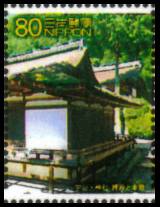 |
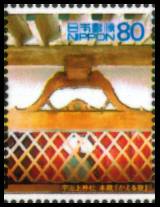 |
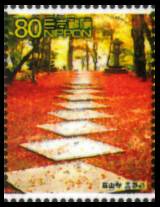 |
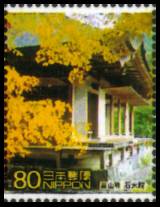 |
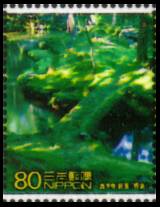 |
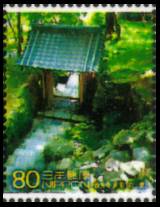 |
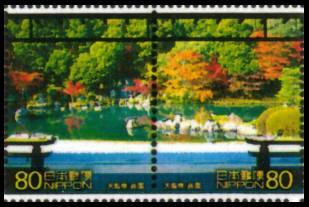 | |
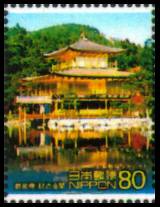 |
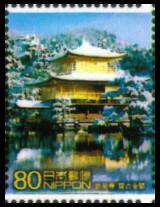 |
||
| Issue | World Heritage Second Series 5 | |
| First Day | December 21, 2001 | |
| Value | 800 yen (80 yen x 10) | |
| Quantity | 3,000,000 sheets | |
| Designs | Ujikamijinja Shrine, Main Hall | Ujikamijinja Shrine, "Kaerumata" (Flog's legs) |
| Kozanji Temple, front approach | Kozanji Temple, Sekisuiin Hall | |
| Saihoji Temple, Moss Garden | Saihoji Temple, garden gate | |
| Tenryuji Temple, garden | Tenryuji Temple, Garden | |
| Golden Pavilion (Rokuonji Temple) in autumn | Golden Pavilion (Rokuonji Temple) in snow | |
| Size | 28.05 x 33.5 millimeters | |
| Printing | Photogravure in 6 colours | |
| Sheet | 10 stamps, Picture of the sheet | |
| Photographer | Benrido Company | |
| Photographs provided | Kozanji Temple | |
| Tenryuji Temple | ||
| Rokuonji Temple | ||
| Designer | Morita Motoharu (public service designer) | |
| Catalog No. | C1800 | |
| First Day of Issue Postmark | Kyoto-Nishi Post Office | |
Japanese Stamp Specialized Catalog (JSCA) & SAKURA Catalog numbers are adopted.